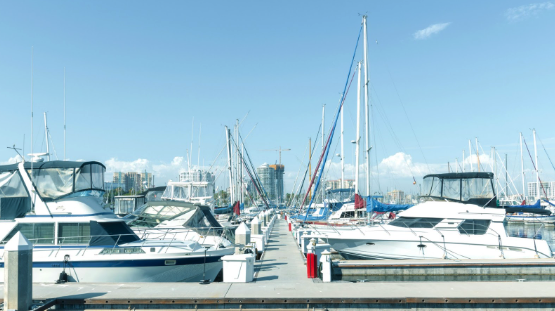How Deep Is Fiber Optic Cable Buried?

How Deep Is Fiber Optic Cable Buried?
When it comes to high-speed internet, fiber optic cable is commonly referred to as the “gold standard”.
However, if you plan on getting it installed for a residential, commercial, or, in our case, a marina, you need to follow specific rules and regulations.
Standard Burial Depth for Fiber Optic Cables in the US
In the US, the standard burial depth of fiber optic cable comes down to whether the cable is in conduit or not.
- In Conduit: Typically around 18 to 24 inches deep when in a PVC or HDPE conduit.
- Direct-Bruised Cable: Generally around 30 to 48 inches deep, the cable is often armored and waterproofed.
A lot of factors determine how deep the cable needs to be buried. Factors like soil conditions, climate, and location all influence the exact chosen depth.
US Regulatory Requirements
When installing fiber optic cable, there are a few industry and legal standards you must follow.
These include:
- NEC (National Electrical Code) Article 770: This specifies the requirements of fiber optic cable pathways, permissible conduit types, and safe separation from electrical power lines.
- BICSI and TIA Standards: The BICSI and TIA publish best-practice manuals for outdoor fiber deployment, covering such factors as trenching techniques, protection methods, etc.
- 811 “Call Before You Dig”: A nationwide safety program mandated by federal and state laws to prevent unintended utility damage. Before any trenching or boring, you must call this number.
- State and Local Harbor Authorities: Beyond the national code, for marinas, it’s worth checking any state or local regulations that may apply to harbor installations.
- US Army Corps of Engineers Permits: If your fiber optic installation projects involve running cables under navigable waters, then a permit from the Army Corps is usually required.
Special Considerations for US Marinas
Compared to land-based projects, installing fiber optic cable around a marina presents some unique challenges.
Some special considerations you may want to think about include:
- Anchor and Boat Traffic Zones: Underwater cables in marina have to contend with anchors, moorings, and occasional dredging. If fiber optic cable crosses areas where boats anchor or navigate, it must be buried deep enough to avoid snagging.
- Storms, Tides, and Coastal Erosion: Coastal marinas face risks from hurricanes, storm surges, and daily tidal currents. Deep trenching and durable conduit may be required to reduce fiber optic cable maintenance.
- Ice and Freezing Conditions: Marinas in northern states or alpine regions must consider winter ice. If a marina’s water freezes over, moving ice sheets or expansion can pull on cables that aren’t buried enough.
- Protective Materials: Given the rough environment, fiber-optic cables need protective materials to ensure they’re water and weather-proof.
- Alternative Routing: When burial isn’t possible, for example, with floating docks and piers, you can run the fiber optic cable in conduit along the underside of the dock’s walkways (or something similar).
Our Process for Fiber Optic Installation in US Marinas
During our fiber optic installation process at US marinas, we follow a code-compliant process to deliver safe, reliable, and lasting installations.
- Step 1: Site Survey & Planning: We assess your marina’s layout, soil conditions, and water access points, mapping optimal cable route and depths.
- Step 2: Utility Locating (811): Before digging, we contact the 811 service to locate and mark all underground utilities.
- Step 3: Trenching & Drilling: In open areas, we trench to the required depth for conduit or direct-bury cable.
- Step 4: Underwater & Shoreline Burial: For these sections, we use specialized equipment or divers to bury the cable deeply.
- Step 5: Conduit & Protection: When needed, cables are placed in conduit with warning tape or mesh laid above to prevent accidental disturbance.
- Step 6: Testing & Activation: Using OTDR and throughput tests, we confirm every fiber meets the performance metrics it should.
Contact Us
You now know how deep fiber optic cable is buried. If you start such a project, only hire professionals. Contact Beacon today and let us survey your space and start planning for installation. See how we can help today.
